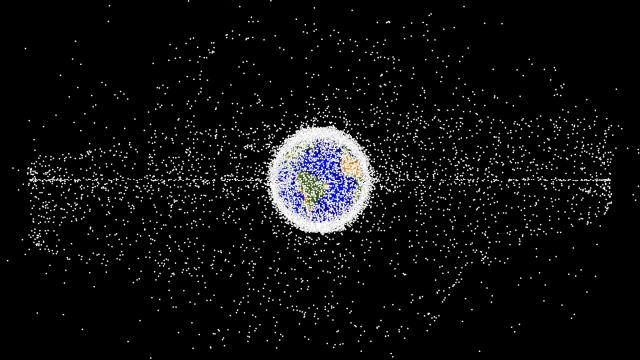NASA needs to know what’s going on with all of the junk that’s orbiting our planet. The space agency announced yesterday that it would be funding three proposals from various universities to better understand orbital debris and sustainability in space.
Orbital debris is one of the greatest challenges facing spacefaring nations and companies. This debris consists of human-made remnants of previous space missions that have been left to wander aimlessly around Earth. NASA previously estimated that there are hundreds of millions of pieces of debris in orbit around Earth, the fastest of which reach top speeds of 28,164 km per hour (28,160 kilometers per hour). This debris poses a huge threat to useful, functioning objects in space. With that, NASA announced yesterday that it would be funding research proposals from different university-based teams to assess the impacts related to space debris.
“Orbital debris is one of the great challenges of our era,” said Bhavya Lal in a press release. Lal is the associate administrator for the Office of Technology, Policy, and Strategy at NASA in Washington, D.C. “Maintaining our ability to use space is critical to our economy, our national security, and our nation’s science and technology enterprise. These awards will fund research to help us understand the dynamics of the orbital environment and show how we can develop policies to limit debris creation and mitigate the impact of existing debris.”
The proposals aim to study the economic, social, and policy issues related to orbital debris. The projects include:
- “Adaptive Space Governance and Decision-Support using Source-Sink Evolutionary Environmental Models,” from researchers at Massachusetts Institute of Technology and University of Texas-Austin.
- “An Integrated Assessment Model for Satellite Constellations and Orbital Debris,” from researchers at Middlebury College, University of Colorado-Boulder, and the Secure World Foundation.
- “Communication and Space Debris: Connecting with Public Knowledges and Identities,” from the University of Central Florida.
The issue of space debris becomes more and more apparent as our activities in space ramps up. The European Space Agency (ESA) has also realised this, announcing earlier this year its partnership with Astroscale and OneWeb to develop a spacecraft to capture decommissioned satellites in low Earth orbit ahead of launching a telecommunications constellation with OneWeb. Around that time, a rogue Russian rocket engine that had been orbiting Earth for 15 years spontaneously exploded, adding at least 16 more pieces of space debris to the ever-growing cloud.
The spacefaring community is seeking to avoid an escalation of the Kessler Syndrome, in which steadily accumulating space debris could eventually make portions of Earth orbit inaccessible. NASA’s latest action is obviously good news, and a step in the right direction towards the protection of this increasingly important domain.
MORE: Obnoxiously Large Satellite Could Mean Bad News for Astronomers Observing the Skies
